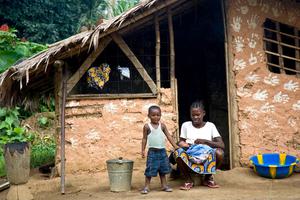The destruction of the Kakhovka dam in Ukraine has drained a critical reservoir, cutting off flows of water to surrounding farmland in the Kherson region. In recent weeks, the vast irrigation network fed by the reservoir has begun to dry up, new satellite imagery shows.
“The major challenge for farmers now is lack of water,” Inbal Becker-Reshef, director of NASA’s food security program, said in a statement. “Many of the summer crops grown in Kherson — such as corn, wheat, sunflower, tomatoes, and melons — are heavily reliant on irrigation.”
In the two months since the Kakhovka dam was destroyed, the four inlets linking the reservoir to the irrigation network have dried up. Early summer rainfall kept irrigation canals full for a time, but in recent weeks, canals have nearly emptied, imperiling the supply of water to an area larger than London. It will take three to seven years to restore irrigation from the reservoir, according to Ukraine’s agricultural ministry.
The North Crimean Canal, which feeds a broad swath of Ukrainian farmland, on June 3 and July 19. Planet Labs via NASA
Ukraine’s agricultural heartland is contending with multiple challenges as a result of the war, as detailed in a new report from its environment ministry. The razing of fields, destruction of farm equipment, and contamination from explosives has led to $8.7 billion in losses, according to the report, which said that landmines are now scattered across 30 percent of Ukrainian farmland.
Last year, 171 countries imported Ukrainian agricultural goods, including many countries in the Global South that are highly dependent on Ukrainian wheat. The June destruction of the Kakhovka dam pushed up global grain prices, as did Russia’s decision in July to pull out of a deal allowing the export of Ukrainian grain.
“The world’s food security is once again in danger,” Ukraine’s agricultural minister, Mykola Solskyi, said in a statement. “If we cannot export food, the population of the poorest countries will be on the edge of survival.”
ALSO ON YALE E360
Collateral Damage: The Environmental Cost of the Ukraine War



